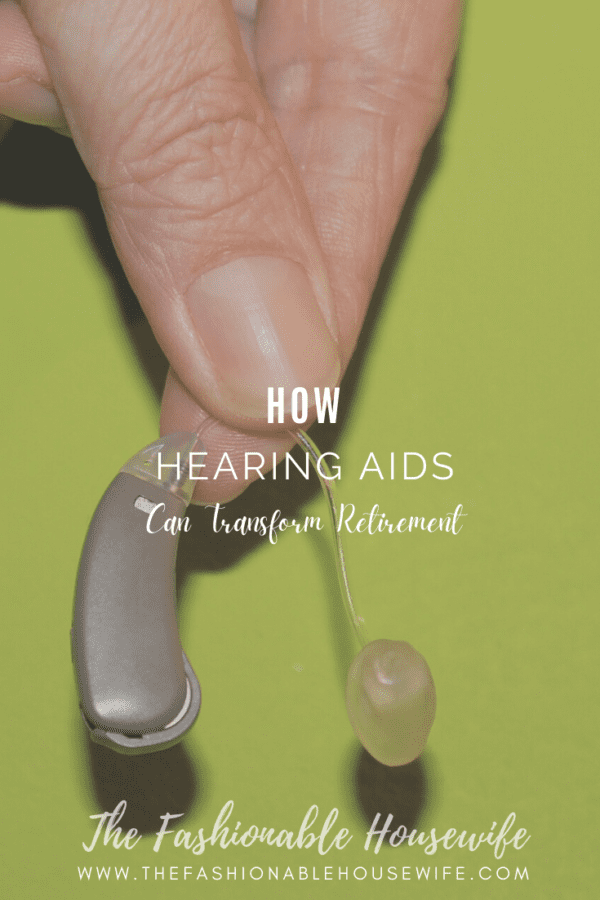
Over half of the US population over the age of 65 suffer from some degree of hearing loss. Though this is a common issue with getting older and wiser, there’s still a lot of stigma surrounding the realities of hearing loss. This is how quality hearing aids can make a massive difference to your quality of life, drastically saving your social and physical well-being.
Hearing Loss: It Happens
To recognize and understand hearing loss, you’ll first need to have a rough idea of how hearing itself works. It’s a surprisingly complex process. When you hear a ball hitting the floor, the ear responds to vibrations that emanate from this impact.
The outer part of the ear collects the sound waves, channeling the vibrations down into the ear canal. From here, the middle ear containing the eardrum plays its role. The sound vibrates the three small bones inside the eardrum; this mechanical movement amplifies the vibrations just before they reach your cochlea.
The cochlea is a snail-shell-shaped structure filled with fluid. From the eardrums, the vibrations create small waves that wash around the cochlea. These waves wash against tiny hairs, connected to nerve cells. Together, they translate these mechanical vibrations into electrical signals that travel to your brain, where they are interpreted as sound.
When a loud noise occurs, more stress is placed on these hairs. Over time, it’s perfectly normal for these hairs to begin to degrade, though regular exposure to loud noise will accelerate this degradation. This means that electrical signals aren’t transmitted as efficiently, and hearing loss occurs.
This type of hearing loss means that whilst you could hear and interpret a one-on-one conversation, any inclusion of background noise can drastically befuddle things. The background chatter at a party or restaurant can leave you lost in a conversation, especially if you keep missing what others have said.
How Hearing Loss Affects Your Social life
Usually, background chatter is what gives pubs and restaurants some charisma and character. However, when your hearing has started to degrade, the ambient noise in a lively eatery can make it very difficult to hear the wait staff.
it can become progressively harder to follow discussions and presentations in meeting rooms when hearing loss develops. And if your work relies on communicating with clients, poor comprehension can often come across as rudeness.
in noisy work environments, employees with hearing loss are 3.6 times more likely to be hospitalized by an injury sustained at work
It’s not uncommon to feel so overwhelmed that you simply start to retract from social situations, finding it easier than dealing with the sense of isolation.
How Hearing Aids Protect Your Physical Health
Aside from severely damaging your social life and mental health, hearing loss also plays a role in the trips and falls. Remember the cochlea? The fluid-filled tracks in these tubes also play a secondary role in position detection. As you tilt or shift, the fluid follows, which is picked up by the brain.
One test showed that hearing aids dramatically aid in keeping your balance. In this experiment, pensioners were asked to stand on a foam pad and raise one leg. From here, the time that they could remain on one leg was measured. The average balance time without the hearing aid was 17 seconds. With a hearing aid correctly inserted and turned on, the average balance time rose to 26 seconds.
This showed that hearing aids not only ease the process of socializing but also decrease the risk of falls. It supported a growing wealth of medical literature suggesting that balance issues and hearing loss are closely interconnected.
The Power of Hearing Aids
Hearing aids are life-changing; very few health solutions make a change overnight, but hearing aids are one painless and efficient solution to many of retirement’s issues. Here’s how hearing aids work their magic.
Hearing aids, similar to any amplifying sound system, are made of three separate components: the microphone; amplifier; and speaker. The mic picks up external sounds and converts them into an electronic signal. The amplifier then strengthens this electronic signal and cleans the sound of any external noise. Finally, the speaker relays the amplified sounds into the cochlea.
There are different designs and makes of hearing aid; many differences originate from the designs and functions of the microphone. For example, the choice between directional, omnidirectional, and adaptive is one to make. Directional mics pick up sounds from (unsurprisingly) one specific direction. This is useful in getting rid of background noises, allowing the wearer to focus on sound directly in front of them – useful for noisy places such as restaurants.
The omnidirectional microphone receives sound from all around the wearer – front, back, and sides. This is useful for quiet situations; able to strengthen any nose around the wearer. Many models incorporate the two different modes, switchable via remote control. Finally, adaptive microphones are the newest technology, automatically adjusting to ambient noise levels and directions. This means that the wearer can move in and out of listening environments at will – without having to fiddle with the settings.
Two final differences that models employ are in the amplifier and the speaker. The amplifier is responsible for ferrying converted signals at the right power to the speaker. An audiologist must program hearing aid amplifiers individually. For example, if you have a hard time hearing soft sounds, then an amplifier can be tuned to amplify only those sound types.
Finally, there’s the most important part: the speaker. This is where you have cosmetic options, as different speaker designs will have a knock-on effect on the general shape and heft of an earpiece. For example, a completely-in-canal hearing aid will be virtually invisible to an observer, but it contains a less powerful speaker suitable primarily for moderate hearing loss.
Throughout the process of getting your hearing checked, and a hearing aid installed, it is important to remember that hearing aids will not restore your normal hearing. Instead, the goal of hearing aids is to increase your awareness of noises and allow for a fuller retirement.





